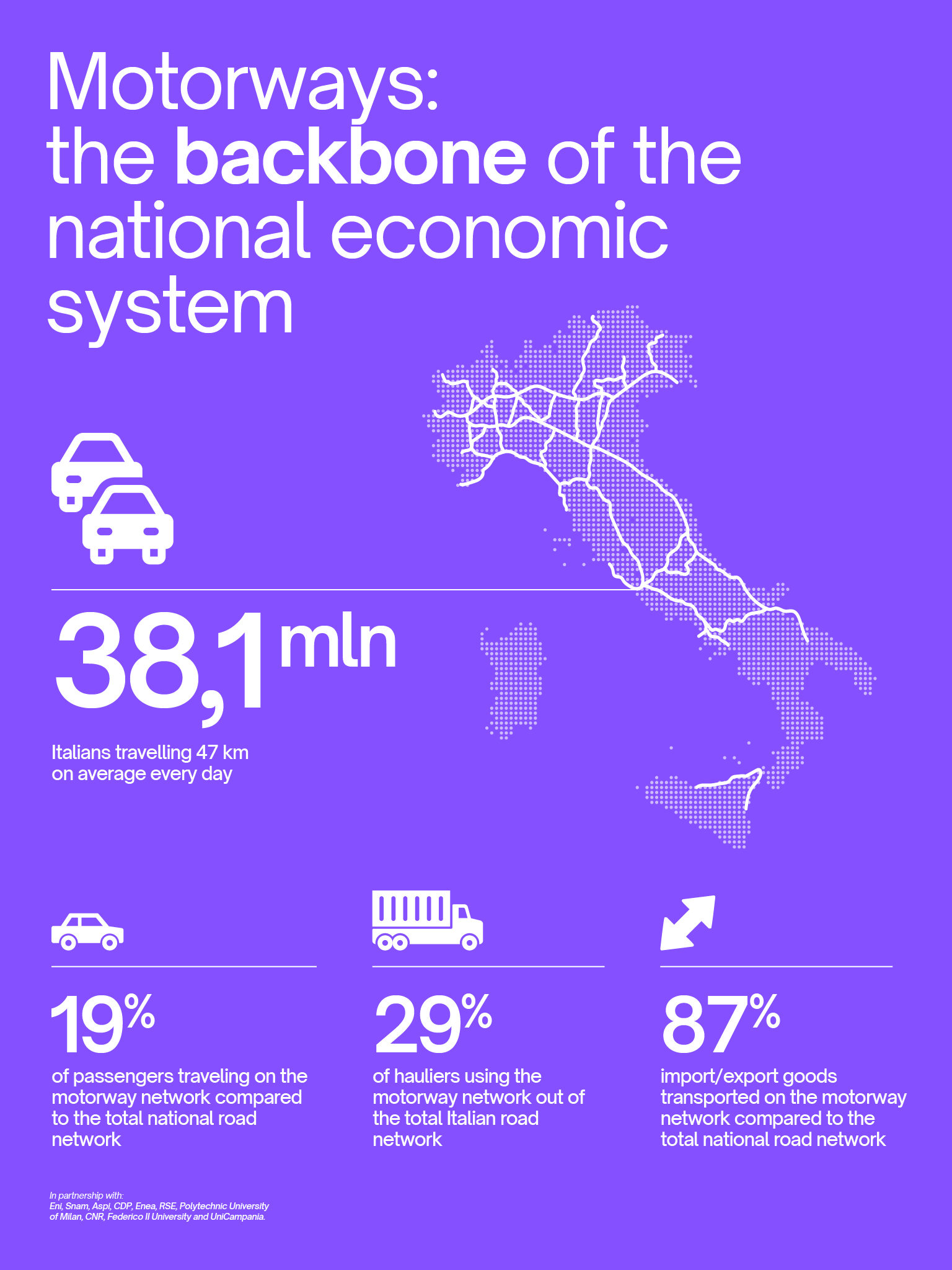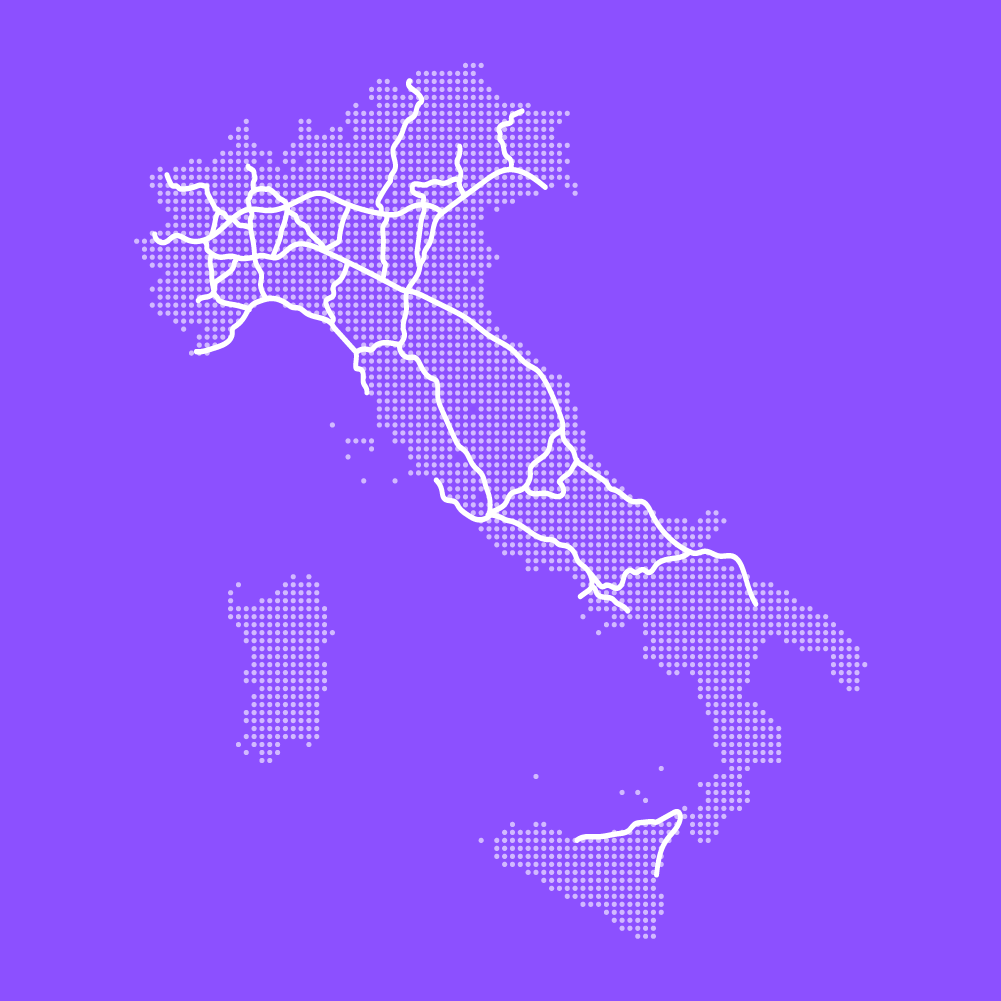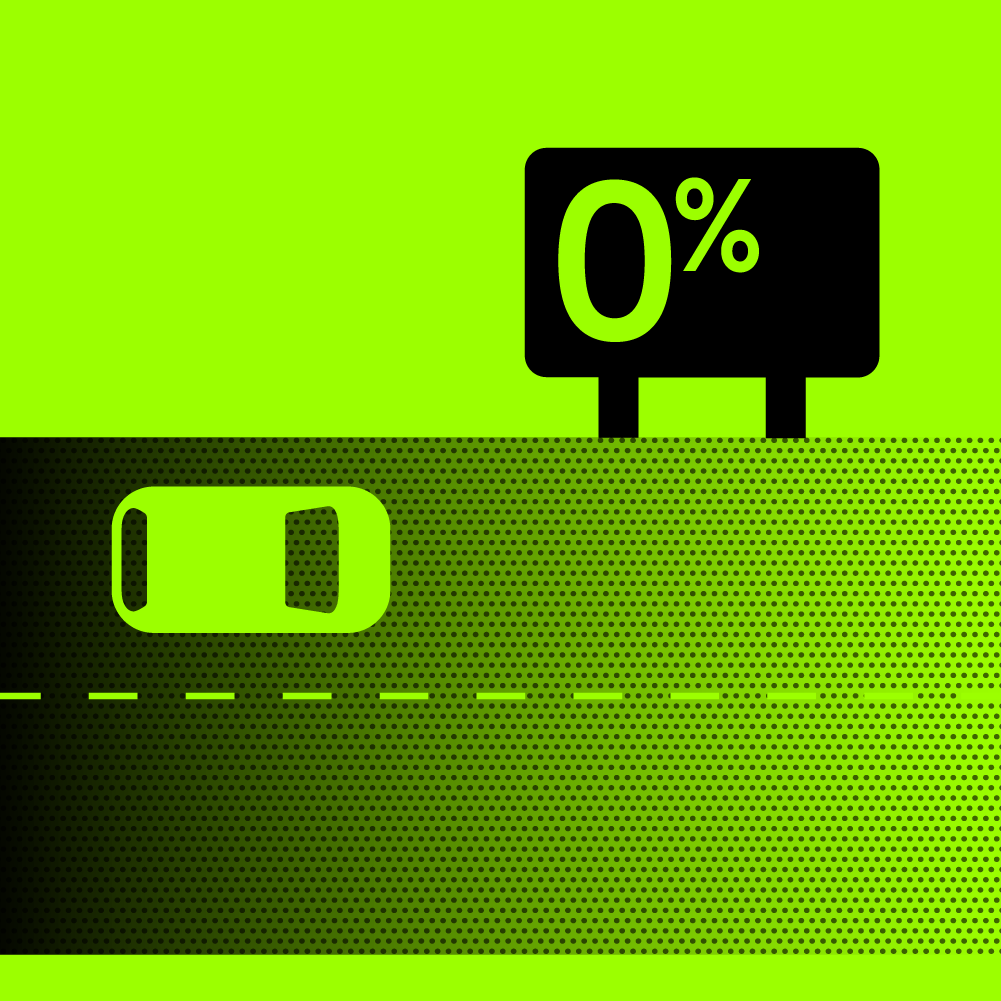Motorways: the backbone of the national economic system
Motorways have been the symbol of an ever-accelerating world, the backbone of the economy and places of reunion. Decades later, the motorway infrastructure remains vital in the lives of Italians.
Forty-nine hours to go from Milan to Naples: this is the current estimate from Google Maps (try it yourself). Little seems to have changed since the 1960s, when the travel time was exactly the same, except for one detail: today 49 hours is the travel time by bicycle. Back then it was by car.
This was before the inauguration of the Autostrada del Sole, a road masterpiece that has revolutionised the lifestyle of Italians in just eight years (it was built between 1956 and 1964).
This was the value of motorways during the economic boom in Italy: a symbol of speed and progress, of an ever-evolving world, the lifeblood of the national economy and the core of many political promises and disputes. However, motorways as places of escape, entertainment and reunion; a place for families leaving for holidays with cars loaded with luggage, for fans travelling to support their favourite team, for immigrant workers returning from the north to their families in the south.
A few decades later and in a profoundly different world, we can say that motorways have not lost their key role in the lives of Italians. On the contrary, the preserve a fundamental role in the national productive fabric, continuing – now more than ever – to be the backbone of the country.
Motorways at the centre of our lives
Today’s figures represent the most tangible evidence of the evolution of Italian motorways over time, and their current role. In 1924, there were 50,000 cars in Italy, today there are about 40 million. Of these, 5 million use the motorway system every day. We can truly define motorways as the vital arteries of our country, pulsating at the relentless pace of passenger and goods transport, supporting the economy and connecting communities. Every day, more than 38 million Italians rely on these roads, travelling an average of 47 kilometres each. A non-stop flow that highlights the centrality of roads and motorways in daily life, with over 89% of passengers choosing road over other forms of mobility. The train, plane and navigation systems are far behind, reaching 7%, 3% and less than 1%, respectively.
The Italian motorway infrastructure proves to be fundamental and indispensable for the national economy, not only by facilitating travel but also by directly influencing demographic distribution and business choices. As a matter of fact, about 70% of the Italian population lives within 20 kilometres from a motorway junction, a figure that underlines the strong dependence on these transport routes and their role in shaping housing dynamics. A proximity that takes on even more significance in the professional sphere, as more than half of workers (58%) work within 10 kilometres of a motorway junction. This proximity is not by chance, but the result of corporate strategies aimed at optimising logistics and travel time, critical factors for efficiency and competitiveness in the global market.
A production system powered by motorways
It is not just a matter of people on the move: the goods fuelling the Italian production system are just as dependent on motorways. More than 84% of goods are transported by road (with vans, trucks and lorries), clearly outnumbering other modes such as maritime, rail, pipeline and air transport, which account for significantly lower percentages. A role that becomes even more crucial when considering international trade: almost one out of every five tonnes per km travelling on Italian motorways serves national import/export.
The relevance of motorways for the economic fabric comes into the spotlight when looking at areas not covered by their network. Several simulations carried out based on a fit-for-purpose econometric model have estimated that, should certain key road sections cease to exist, the economic impact would range between EUR 8 and 14 billion (i.e. 0.5-0.8% of GDP). This is a staggering figure that sheds light on the huge daily economic value generated by the operation of these infrastructures and the domino effect that their interruption could unleash on the national economy.
All the above depicts an unambiguous scenario: motorways are not just roads, but real pillars of the Italian production system, essential for the existence and development of the country’s economy. Their presence and efficiency are the backbone not only for the mobility of people and goods, but also for Italy’s economic health, influencing life decisions and business investments, and making motorways a true symbol of vitality and economic progress.
Efficient and digitised motorways for a modern country
Like the entire national economic system, motorways need to look ahead, to be modernised, improved and, where necessary, widened. The future of Italian motorways is thus ready to embrace innovation and digitisation, where technology and sustainability come together to build a modern, cutting-edge infrastructure. At the heart of this transformation is the development of smart motorways, capable of interacting with connected vehicles and supporting the transition to autonomous and safer driving.
The vision of a fully automated motorway is gradually materialising, with the prospect of accommodating an increasing number of self-driving vehicles, all interconnected and able to communicate with the road infrastructure. This new mobility model promises to revolutionise the very concept of driving and travel, with traffic flows constantly monitored and determined in real time. The use of advanced technologies will allow managing vehicle speed dynamically, increasing safety distances and drastically reducing the risk of accidents.
In this context, the elimination of human error becomes an achievable goal, minimising road accidents. Furthermore, the optimal regulation of traffic flows will contribute to a significant reduction in harmful emissions, in line with the decarbonisation goals the modern world is striving for.
The development of this futuristic scenario goes beyond traffic management and safety. It also extends to supporting a more sustainable and integrated mobility, with the introduction of fast electric recharging stations, which are essential to support the increasing spread of electric vehicles. The dynamic monitoring of infrastructure, with drones and other advanced devices, will enable more efficient and less dangerous and invasive inspections.
The transformation of Italian motorways into advanced technological corridors is not only a qualitative leap in terms of efficiency and safety, but also a fundamental step towards a future in which mobility will be more sustainable, safe and aligned with the needs of a fast-changing world. All these achievements will strongly benefit the Italian economy.























